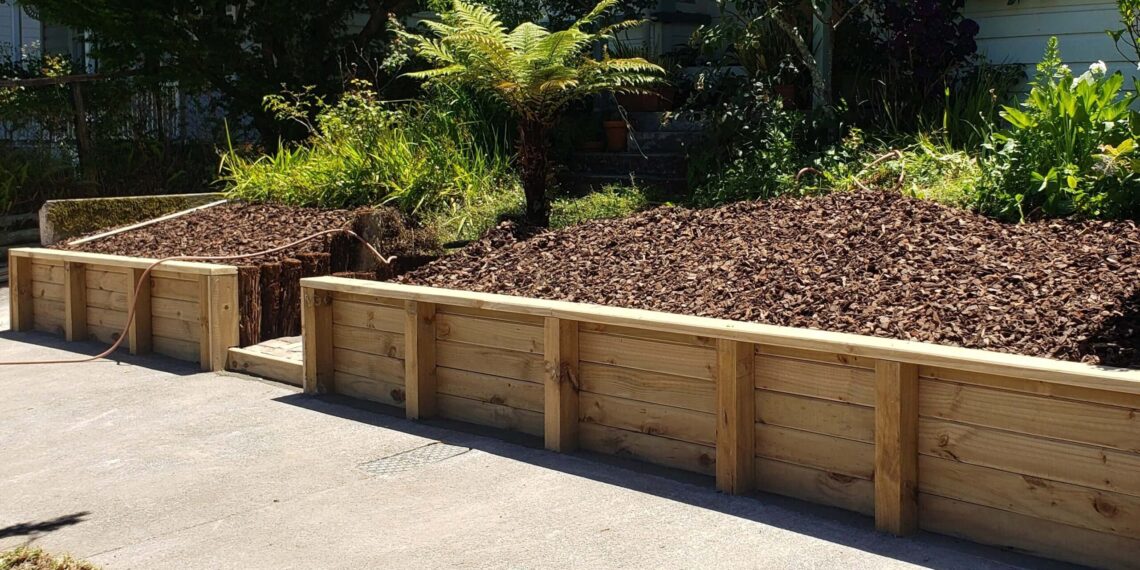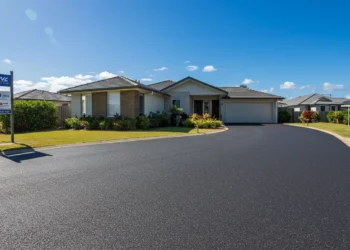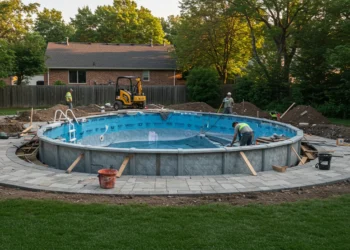A timber retaining wall, well as the name suggests, is a retaining wall made of timber or wood. But first, let’s learn a little more about retaining walls in general.
Retaining walls help retain soil or other materials from sliding or eroding. They are commonly considered an option while landscaping and construction to level surfaces, preventing erosion, and providing structural support for buildings or other structures.
These walls can be constructed from various different kinds of materials such as concrete, stone, brick, wood, or even soil. Various methods, like gravity, cantilever, anchored, and soil-nailed walls are used to set up these walls. Which type of retaining wall to be used is mostly determined by the project’s specific requirements, such as the wall’s height, the type of soil maintained, and the weight the wall must support.
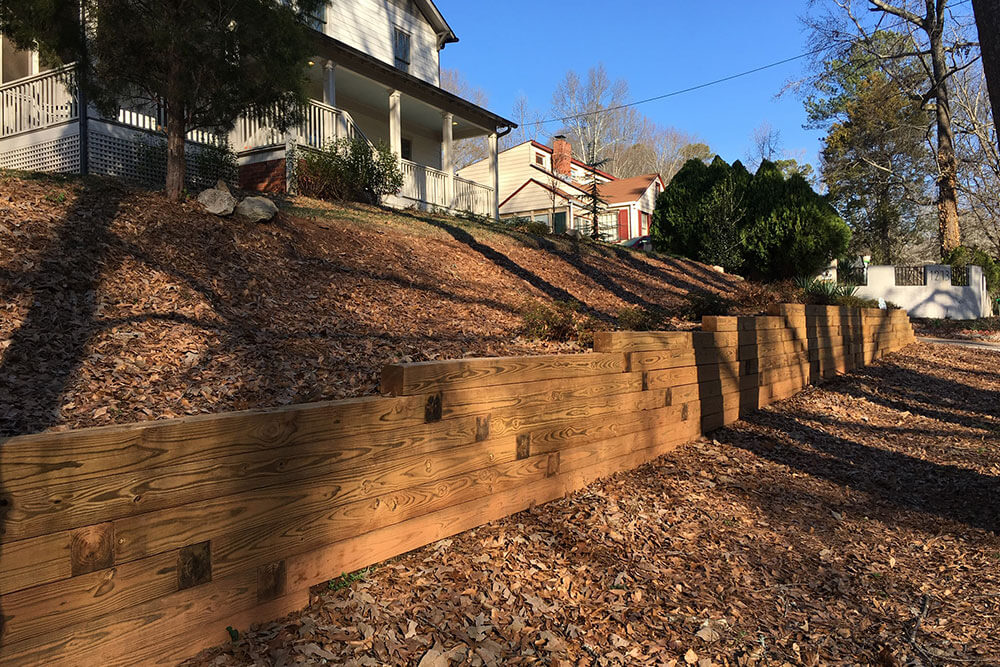
Since a retaining wall‘s purpose is to hold back soil or other materials that would otherwise slope or collapse, a timber retaining wall is specifically designed to use wood, as suggested by its name. This wall is typically built using wooden posts or stakes to form a framework filled with soil or other materials. Like any other landscaping project, retaining walls not only refine the space but they also are meant for their utility.
Various techniques, such as steel rods or anchors, are used to secure the wooden framework to the ground. Timber-made walls have the advantage of being relatively simple to build and can be a cost-effective solution for small to medium-sized retaining wall projects. Besides that, using natural wood can give the landscape design an appealing and organic appearance.

However, timber retaining walls may not be as durable as other retaining walls and may necessitate more maintenance over time. The wood may rot or decay, and termites or insects may cause further damage. Consequently, selecting high-quality wood and treating and maintaining it properly is critical to ensure the retaining wall’s longevity.
Advantages of building a timber retaining wall:

Cost-effective:Timber wood retaining walls are often less expensive than other retaining walls. Timber is widely available and straightforward, lowering labour and material costs.
Natural Appearance: These retaining walls can blend in with the natural landscape and give the outdoor space an organic appearance. The natural appearance of wood can also add warmth and character to the area.
Versatile: Timber walls are universal because they can be used in various settings and can be built to any required shape or size. They can also be stained or painted to match their surroundings or to achieve a particular design aesthetic.
Easy to install: These walls are relatively simple and can be completed quickly. As a result, they are a popular choice for do-it-yourself projects or contractors who need to complete a retaining wall quickly.
Environmentally friendly: Because timber is a renewable resource and biodegradable, it has a lower environmental impact than other retaining wall materials such as concrete or steel.
While there are several advantages to building a timber wood retaining wall, there are also some drawbacks and things to also considered before deciding on this retaining wall:
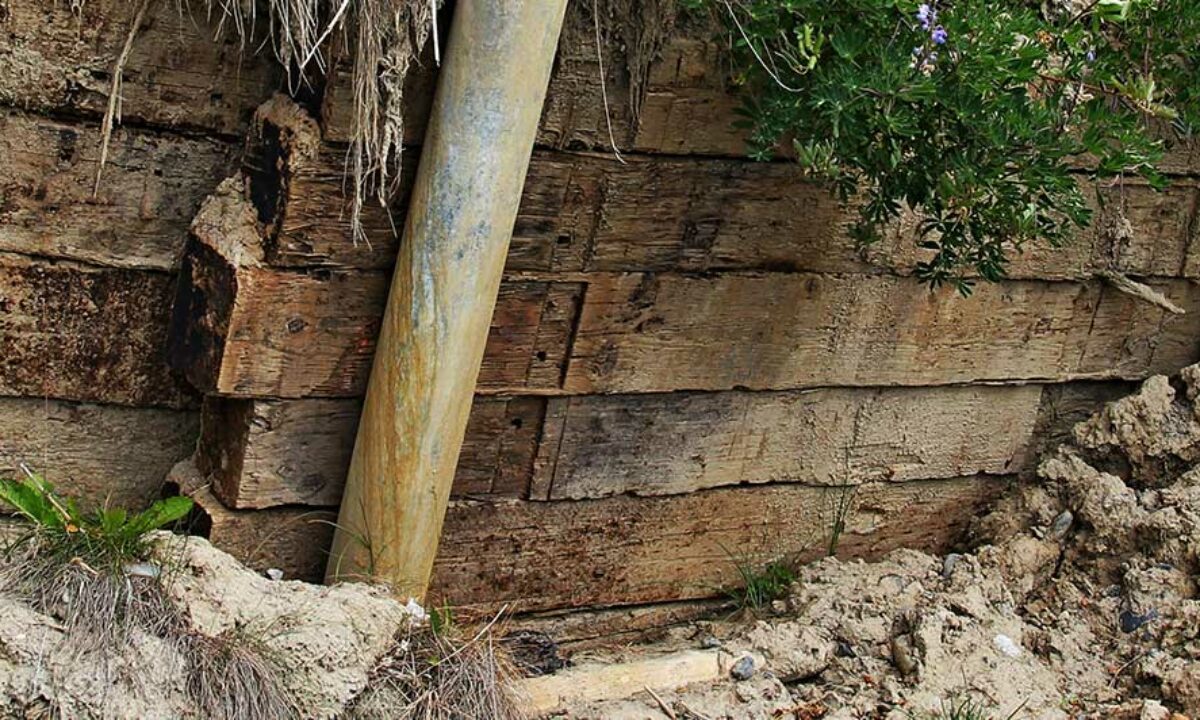
Timber wood retaining walls may not be as long-lasting as other retaining walls, such as concrete or stone walls. Over time, the wood may rot or decay, especially if it needs to be treated appropriately or maintained. Furthermore, termites and other insects may cause damage to the wood.
They must be maintained regularly to ensure their longevity. This may include preservative treatment, staining or painting the wood, and replacing damaged or rotting wood. Retaining walls also have a limited height because the wood may not withstand the pressure from the soil or other materials it is holding back.
Timber is a combustible material that can increase the risk of fire. There may be better options than a timber-made wall in areas prone to wildfires or other types of fires. Also while timber is a renewable resource, its production and transportation can have a negative impact on the environment. Additionally, using preservatives or other chemicals to treat the wood can have environmental consequences.
Before deciding whether a timber-made retaining wall is the best option for your project, consider the potential drawbacks carefully. If you are still determining whether a wood retaining wall suits your needs, you should speak with a professional landscaper or contractor.
How to build a timber retaining wall?
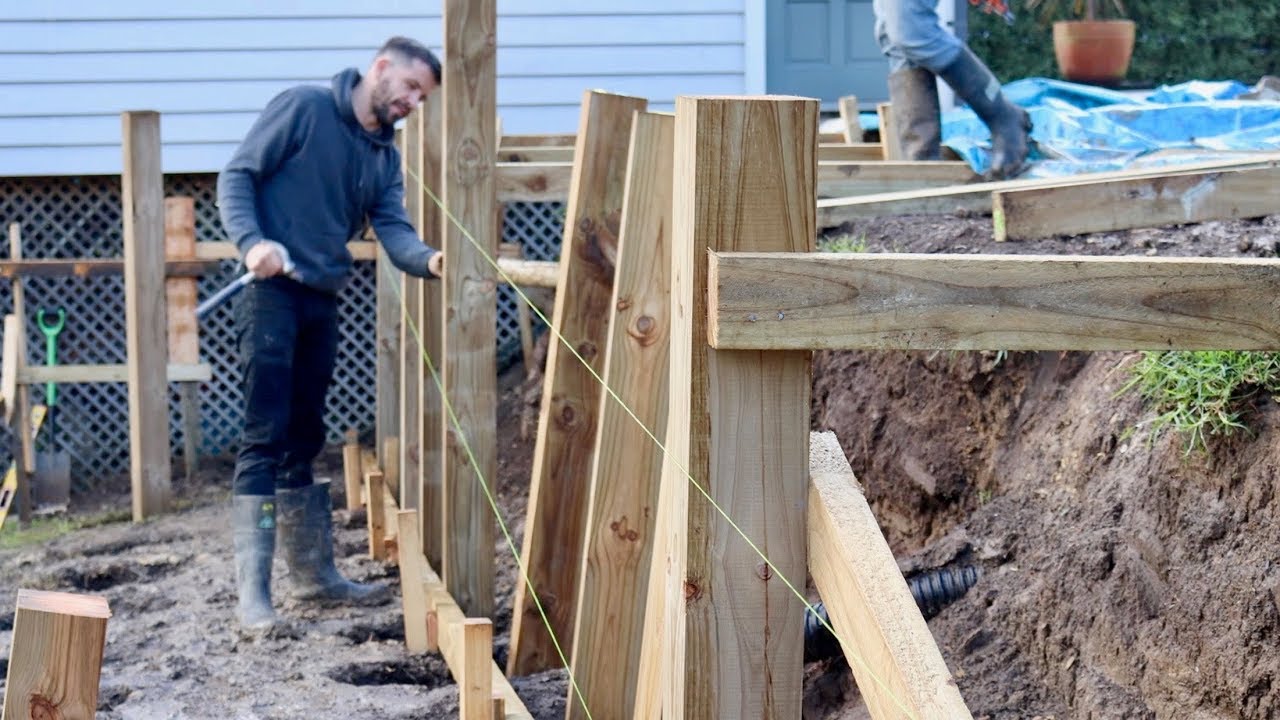
A retaining wall made out of timber especially, needs meticulous planning, preparation, and construction. Here are the general steps involved in constructing a wood retaining wall:
- Determine the size and location of the retaining wall. Consider the terrain’s slope, the type of soil or materials being retained, and any potential drainage issues. These factors are significant in the process, so be thorough and meticulous.
- Get any permits or approvals required from your local government or building department. No one wants to get involved in any permit issues later on after spending a hefty amount on the construction.
- Collect all the necessary materials and tools, such as timber posts or stakes, lumber for the wall structure, fasteners (such as screws or nails), gravel or other backfill material, and other equipment (such as a post-hole digger or power saw).
- Dig out the area where the retaining wall will be built. This may require the removal of soil or other materials, as well as the levelling off the ground to create a stable foundation. Leveling is essential and will further improve the retaining wall’s performance.
- Space the timber posts or stakes evenly along the length of the wall. These posts will serve as the retaining wall’s framework, so this framework must be accurately set.
- Attach horizontal boards or “sleepers” to the posts to form the wall structure. The sleepers should be evenly spaced and fastened to the posts with fasteners.
- Add additional layers of sleepers as needed to achieve the desired retaining wall height. To create a stable structure, each layer should be staggered.
- Backfill the retaining wall area with gravel or other materials. This will help in drainage and reduce pressure on the wall.
- Add topsoil or other materials to the area in front of the retaining wall to complete the look.
- Finally, inspect and maintain the retaining wall regularly to ensure its long-term survival. This could include replacing damaged or rotting wood, applying preservatives to the wood, or performing other maintenance tasks.
It’s important to note that the specific steps involved in constructing a retaining wall will vary depending on the design and materials used. Be sure to seek the advice and assistance of a professional landscaper or contractor when constructing your retaining wall. Whether or not you have a certain amount of expertise in this area, there is no harm in taking a second opinion and getting to know someone else’s perspective on things.
Things to keep in mind while taking up a project such as that of a timber retaining wall

There are several important factors to consider when building a timber wall to ensure that it is structurally sound and will last for many years. Here are some things to think about:
Site preparation: Proper site preparation is critical to the retaining wall’s success. Ascertain that the construction site is level and free of any debris or obstructions that could hinder the construction process.
Drainage: Proper drainage is critical to the retaining wall’s longevity. Ensure the area behind the wall is graded to allow for proper drainage, and, if necessary, consider installing a drainage system.
Materials: For the retaining wall, use high-quality materials such as pressure-treated wood resistant to rot and decay. To ensure a secure and stable structure, use appropriate fasteners and connectors.
Height and length: Consider the retaining wall’s size and length, as these factors will affect its stability. If you need help with the proper dimensions for your retaining wall, consult a professional.
Backfill: Proper backfill is critical to the retaining wall’s stability. Use a material that will provide adequate drainage and support for the wall, such as gravel or crushed stone.
Maintenance: Regular maintenance is crucial for the retaining wall’s longevity. Inspect the wall regularly for signs of damage or decay, and make any needed repairs as soon as possible.
Safety: When constructing a retaining wall or in case your plan is to diy timber retaining wall, always prioritize security. Wear protective equipment, such as gloves and eye protection, and be cautious when handling tools and materials.
Some final words…
While there are numerous benefits to constructing a timber retaining wall, some potential drawbacks exist, such as regular maintenance and the risk of decay or insect damage. Before deciding on a wood retaining wall, weigh the pros and cons carefully. It will be a detailed project to take up, so first and foremost, make sure that this project is worth taking up for you.
Considering the above mentioned factors, you can ensure that your timber wall is structurally sound and will last for many years. If done right, it can be a fantastic addition to your home. In case you have any questions about the construction process, be sure to consult with a professional landscaper or contractor. Consulting an expert and keeping them in the loop not only takes some of the stress away from you but also ensures you are guided correctly and prevents many mistakes.
